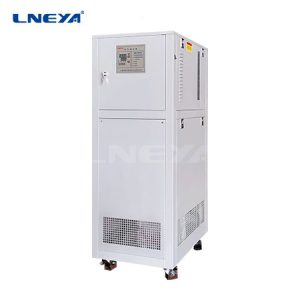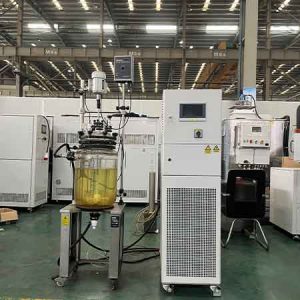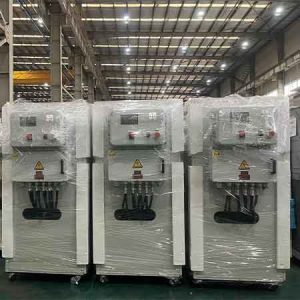Sistema de refrigeración de la batería
The heat-related problems of batteries are the key factors that determine their performance, safety, life and use. First, the temperature level of a Li-ion battery directly affects its energy and power performance in use. When the temperature is low, the available capacity of the battery will rapidly decay. Charging the battery at a too low temperature (such as below 0°C) may cause an instantaneous overcharge of the voltage, resulting in internal lithium precipitation and a short circuit. . Second, the heat-related issues of Li-ion batteries directly affect the safety of the batteries. Defects in the manufacturing process or improper operation during use may cause local overheating of the battery, which in turn causes a chain exothermic reaction, eventually causing serious thermal runaway events such as smoke, fire or even explosion, threatening the lives of vehicle drivers and passengers.
In addition, the operating or storage temperature of lithium-ion batteries affects their service life. The suitable temperature of the battery is about 10 ~ 30°C, too high or too low temperature will cause a rapid decay of battery life. The large size of the power battery makes the ratio of its surface area to volume relatively smaller, and the internal heat of the battery is not easily dissipated, and problems such as uneven internal temperature and excessive local temperature rise are more likely to occur, thereby further accelerating battery attenuation and shortening battery life.
En battery thermal management system is one of the key technologies to deal with the heat-related problems of the battery, and to improve the performance, safety and life of the power battery.

The main functions of the sistema de refrigeración de la batería include:
● Effective heat dissipation when the battery temperature is high to prevent thermal runaway accidents;
● Preheat the battery when the temperature is low to increase the battery temperature to ensure the charging and discharging performance and safety at low temperature;
●Reduce the temperature difference in the battery pack, suppress the formation of local hot spots, prevent the battery from decaying too quickly at high temperature locations, and reduce the overall life of the battery pack.
The temperature environment in the battery pack has a great impact on the reliability, life and performance of the battery cell. Therefore, it is particularly important to maintain the temperature in the battery pack within a certain temperature range. This is mainly achieved through cooling and heating. Here we briefly introduce three cooling methods: air cooling, liquid cooling, and direct cooling.
Air-cooled battery cooling system
Air cooling uses low-temperature air as the medium and uses heat convection to reduce the battery temperature. It is divided into natural cooling and forced cooling. This technology uses natural wind or fan to cool down the battery with the evaporator that comes with the car. The system structure is simple and easy to maintain.
Liquid cooling battery cooling system
Liquid cooling technology uses liquid convection heat exchange to take away the heat generated by the battery and reduce the battery temperature. The liquid medium has a high heat transfer coefficient, large heat capacity, and fast cooling speed. While reducing the temperature and improving the consistency of the temperature field of the battery pack, the volume of the thermal management system is relatively small. The form of the liquid cooling system is more flexible: the battery cells or modules can be immersed in the liquid, cooling channels can also be set between the battery modules, or a cooling plate can be used at the bottom of the battery. When the battery is in direct contact with the liquid, the liquid must be insulated (such as mineral oil) to avoid short circuits. At the same time, the airtightness requirements of the liquid cooling system are also relatively high. In addition, it is mechanical strength, vibration resistance, and life requirements.
Direct cooling battery cooling system
Direct cooling (refrigerant direct cooling): use the principle of latent heat of evaporation of refrigerant (R134a, etc.) to build an air conditioning system in the vehicle or battery system, install the evaporator of the air conditioning system in the battery system, and the refrigerant in the evaporator Evaporate and quickly and efficiently take away the heat of the battery system, so as to complete the cooling of the battery system.
Correo electrónico: info@lneya.com WeChat ID: +8615251628237 WhatsApp: +86 17851209193
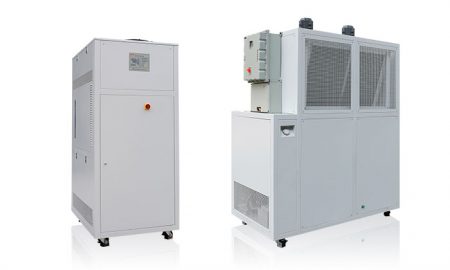 Enfriadoras de precisión / Enfriadoras pequeñas (Diseños a medida)
Enfriadoras de precisión / Enfriadoras pequeñas (Diseños a medida)
El enfriador puede utilizarse ampliamente en diversas industrias y laboratorios, y admite diseños personalizados.
| Temperatura | -18°C ~ +30°C | Serie +5°C ~ +35°C |
| Capacidad de refrigeración | 0,35 ~ 0,9 kW | 1,8 ~ 50 kW |
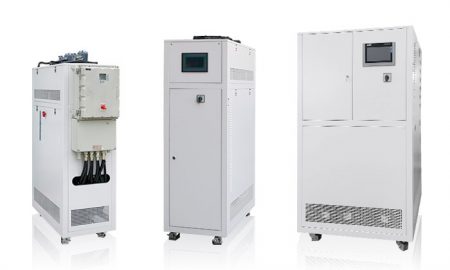
Enfriadoras de recirculación (Diseños a medida)
Nuestro enfriador de recirculación adopta tecnología de refrigeración de baja temperatura, la temperatura es tan baja como -120℃, y varios accesorios son personalizables.
| Temperatura | Serie -25°C ~ +30°C | Serie -45°C ~ +30°C | Serie -60°C ~ -20°C | Serie -80°C ~ -20°C | Serie -120°C ~ -70°C |
| Capacidad de refrigeración | 0,8 ~ 30 kW | 0,75 ~ 12 kW | 0,4 ~ 6kW | 0,2 ~ 6kW | 0,3 ~ 5kW |
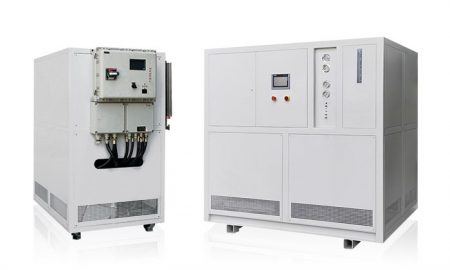
Refrigeradores de baja temperatura (Diseños a medida)
Estamos especializados en la producción de refrigeradores de baja temperatura con un rango de control de temperatura de hasta -150°C, que pueden satisfacer las necesidades de refrigeración de diferentes industrias.
| Temperatura | Serie -25°C ~ -5°C | Serie -45°C ~ -10°C | Serie -60°C ~ -10°C | Serie -80°C ~ -30°C | Serie -110°C ~ -50°C | Serie -150°C ~ -110°C |
| Capacidad de refrigeración | 12 ~ 360 kW | 6 ~ 180 kW | 6 ~ 180 kW | 4 ~ 180kW | 2 ~ 120kW | 2,5 ~ 11 kW |
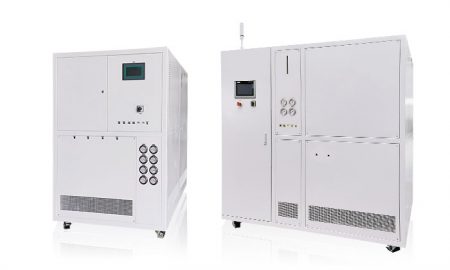 Enfriadoras para pruebas en automoción
Enfriadoras para pruebas en automoción
Simulación de temperatura para pruebas de calidad de vehículos: prueba de duración de baterías, banco de pruebas de inyectores/motores de combustible, prueba de airbags, banco de pruebas de componentes, etc.
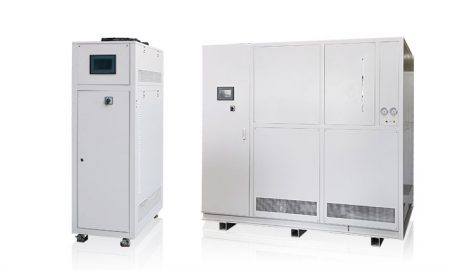
Enfriadoras para semiconductores
Adecuado para el control preciso de la temperatura de los componentes electrónicos. En la fabricación de componentes electrónicos semiconductores para entornos adversos, las fases de ensamblaje de embalajes de CI y de pruebas de ingeniería y producción incluyen pruebas térmicas electrónicas y otras simulaciones de pruebas ambientales.

Enfriadoras para almacenamiento de energía(Diseños a medida)
Liquid Cooling Solutions For Battery Energy Storage Systems
| Temperatura | -45°C ~ +55°C |
| Capacidad de refrigeración | 45 kW |
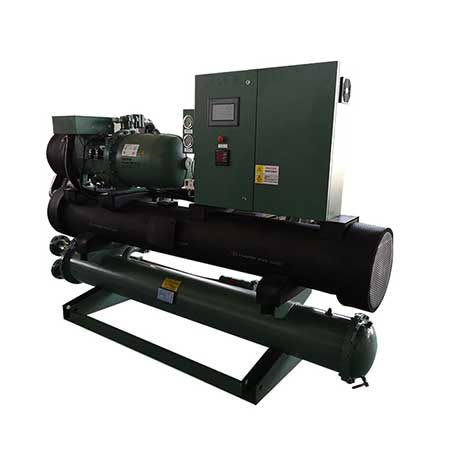
Refrigeradores de tornillo (Diseños a medida)
Refrigeradores de tornillo de baja temperatura y refrigeradores de tornillo a temperatura ambiente
| Temperatura | +5°C ~ +30°C | +5°C ~ +30°C | +5°C ~ +30°C | +5°C ~ +30°C | -25°C ~ +5°C | -25°C ~ +5°C |
| Capacidad de refrigeración | 107 ~ 1027 kW (compresor único) | 299 ~ 2134 kW (compresor doble) | 98 ~ 934 kW (compresor único) | 272 ~ 1940 kW (compresor doble) | 48 ~ 467 kW (un compresor) | 51 ~ 497 kW (compresor único) |
 LNEYA
LNEYA
 简体中文
简体中文














































































